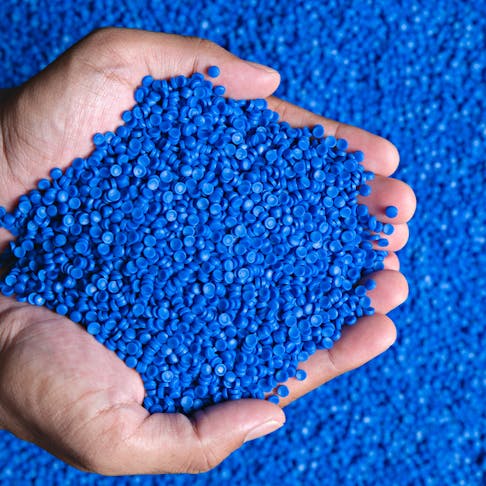Recognizing Polymers: The Scientific Research Behind Versatile Materials
Recognizing Polymers: The Scientific Research Behind Versatile Materials
Blog Article
Taking Advantage Of the Power of Polymers: Comprehending the Extensive Usages and Favorable Impacts
Polymers, with their varied chemical frameworks and residential properties, have ended up being crucial in various sectors, revolutionizing the method we connect with materials on an everyday basis. As we discover the extensive uses of polymers and their function in forming a more sustainable, effective, and cutting-edge future, it becomes noticeable that their potential is as huge as the particles themselves.
Versatility in Everyday Products
Polymers display impressive versatility in a broad variety of day-to-day items, showing their crucial duty in modern society. From the flexible plastic housing of mobile phones to the durable fibers in apparel, polymers have actually changed the way we interact with products in our day-to-days live. One of the most common uses polymers is in packaging materials. Polyethylene, for instance, is widely utilized in food product packaging due to its light-weight, sturdy, and moisture-resistant residential or commercial properties. Additionally, polymers play an important function in the automobile industry, where they are used in manufacturing light-weight parts that enhance fuel efficiency.
Moreover, polymers have actually discovered their method into the medical care market, with applications ranging from medical tools to medicine shipment systems. Biodegradable polymers are used in stitches and implants, decreasing the threat of negative reactions in people. In the building market, polymers are incorporated right into paints, adhesives, and insulation products, improving sturdiness and energy effectiveness. Overall, the convenience of polymers in daily items highlights their significance in driving technology and enhancing top quality of life.
Sustainability in Product Innovations
With the ongoing focus on environmental consciousness and source performance, the focus changes towards sustainability in product technologies, showing a growing dedication to responsible production practices across different industries. In recent years, there has actually been a noteworthy rise in the growth of sustainable materials, especially within the world of polymers. These cutting-edge materials are created to decrease ecological impact throughout their entire lifecycle-- from sourcing resources to disposal or recycling.
One substantial facet of sustainability in product advancements is the principle of biodegradability. Eco-friendly polymers have actually garnered attention for their ability her latest blog to break down naturally into non-toxic byproducts, decreasing waste and contamination. Furthermore, using recycled polymers originated from post-consumer or post-industrial sources is acquiring traction as a way of promoting a circular economy and reducing dependency on virgin materials.

Enhancing Efficiency in Design
Enhancing efficiency in design needs a careful assimilation of innovative innovations and exact methods to enhance performance and effectiveness in various industrial applications. Polymers play an essential role in this undertaking, supplying a variety of advantages that enhance the performance of design products and components.
One key facet of boosting performance in engineering is the capacity of polymers to enhance sturdiness and strength. By incorporating polymers right into design designs, suppliers can produce lightweight yet robust frameworks that can endure high levels of stress and pressure. This particular is specifically useful in industries such as aerospace, auto, and building and construction, where the demand for solid yet lightweight products Find Out More is vital.
Furthermore, polymers can additionally improve efficiency by supplying thermal and chemical resistance, reducing rubbing, and improving electric conductivity. These homes make polymers optimal for a vast array of engineering applications, including seals, bearings, layers, and electronic parts. Polymers. By utilizing the one-of-a-kind residential properties of polymers, engineers can enhance the efficiency of their designs and produce extra effective and trusted products
Effect On Clinical Developments
Polymers have played a vital duty in modern-day clinical innovations, varying from medicine distribution systems to cells design. One of the crucial locations where polymers have made a considerable effect is in the development of biodegradable sutures and implants.
Moreover, polymer-based materials are increasingly being made use of in clinical tools such as catheters, stents, and prosthetics as a result of their biocompatibility and adaptability. Polymer layers on clinical gadgets can avoid infections and improve total individual results - Polymers. Additionally, visit this site advancements in nanomedicine have actually made it possible for making use of polymer nanoparticles for targeted medication delivery, boosting the effectiveness and decreasing side effects of various drugs
Function in Environmental Conservation

Moreover, polymers are made use of in water treatment processes, aiding in the purification and recycling of water sources. This helps in minimizing water pollution and ensuring access to clean water for both human intake and environmental health and wellness. Polymers also contribute in farming through the advancement of biodegradable mulches and controlled-release plant foods, advertising sustainable farming methods.
Verdict
In conclusion, polymers have shown to be a flexible and vital product in different markets, from daily products to engineering and medical developments. Understanding the comprehensive uses of polymers underscores their importance in driving innovation and progress in numerous areas.
Report this page